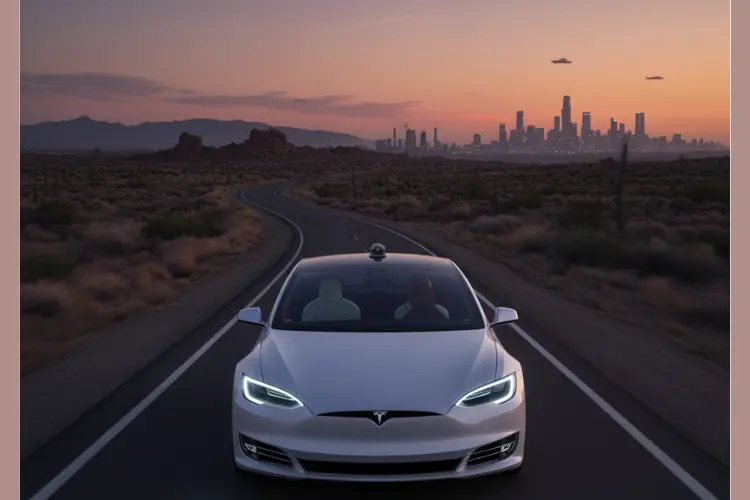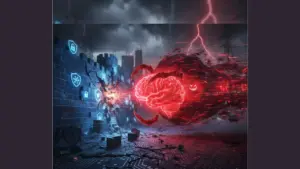Introduction
Tesla has pushed another major update to its self-driving technology with the release of FSD v14. This version brings smarter decision-making, smoother driving, and an upgraded “Mad Max Mode” that promises more confident lane changes. For Tesla owners, tech enthusiasts, and fractional CTOs studying autonomous innovation, this update is one of the most significant steps toward true hands-free driving.
In this deep dive, we explore everything new in FSD v14, how it performs in real-world conditions, how it integrates with the Cybertruck, and whether it’s worth upgrading.
What’s New in Tesla FSD v14?
Tesla continues refining Full Self-Driving with every version, but FSD v14 stands out because it feels noticeably more human in how it makes driving decisions. The update improves path prediction, shortens reaction time, and enhances confidence in complex situations.
Here are the biggest improvements:
1. Stronger Behavior Prediction
FSD v14 predicts vehicle movements more accurately than previous versions. The system anticipates merges, sudden braking, and aggressive drivers better.
2. More Natural Lane Positioning
The car now maintains more consistent lane placement. It avoids drifting too close to the edges, especially on narrow or poorly marked roads.
3. Smoother Steering and Acceleration
The update reduces jerky movements. Steering feels steady and human-like, while acceleration and braking transitions are softer and more controlled.
4. Faster Decision-Making
Tesla claims the system can react a fraction of a second faster in critical moments. This improvement is noticeable during lane merges and sudden stops.
5. Enhanced Highway Performance
Highway navigation feels more confident, especially when overtaking or merging into fast traffic.
These upgrades make FSD v14 feel more refined, predictable, and aligned with real driving behavior.
How Mad Max Mode Works in FSD v14
Mad Max Mode has been part of Tesla’s lane-change profile options for a while, but FSD v14 transforms it into something more capable and consistent.
What Mad Max Mode Actually Does
Mad Max Mode allows the car to make more assertive lane changes. It looks for small gaps in traffic, accelerates confidently when needed, and completes lane changes quickly.
In previous versions, Mad Max Mode could feel unpredictable. Sometimes it hesitated. Other times it avoided safe opportunities.
In FSD v14, Mad Max Mode has changed in three key ways:
1. Better Gap Analysis
The car evaluates gaps with more accuracy. It understands when a lane change is safe, even in fast-moving traffic.
2. More Human-Like Aggression
The mode now mirrors how a confident, skilled driver maneuvers on highways. It doesn’t wait too long or make overly cautious decisions.
3. Smooth Execution
Lane changes are smoother, without sudden jerks or harsh acceleration. You feel the system working, but it’s controlled and steady.
For highway commuters, Mad Max Mode finally feels like a usable feature instead of a novelty.
Real-World Performance Test: How FSD v14 Handles Daily Roads
A real test of autonomy happens in real driving conditions — not demos, not simulations.
Here’s how FSD v14 performs across different environments:
City Driving
City driving is the toughest challenge for any autonomous system. FSD v14 handles this better than before. It identifies pedestrians more reliably, respects crosswalks, and handles tight turns smoothly.
Traffic lights, roundabouts, and stop signs feel more natural, with less hesitation.
Highway Driving
Highway driving is where FSD v14 shines the most. Lane changes, merges, and exits are noticeably smoother. The system predicts traffic flow earlier, adjusts speed intelligently, and keeps safe distances with precision.
Unmarked Roads
FSD v14 does a better job of identifying road boundaries even when lines are faded or missing. It relies more on context and objects around the car.
Heavy Traffic
In heavy traffic, the car moves with confidence. It handles stop-and-go motion gracefully and responds to sudden braking without delay.
Unexpected Situations
The system reacts faster to objects, roadblocks, and erratic drivers. It avoids overreacting and maintains stable control.
Real-world tests show that FSD v14 is more reliable, but supervision is still required.
How FSD v14 Works on the Tesla Cybertruck
The Cybertruck adds more complexity to autonomous driving due to its size, shape, and weight. Fortunately, FSD v14 adapts surprisingly well.
Improved Turning Behavior
Due to its wide turning radius, the Cybertruck needed better path planning. FSD v14 now anticipates turns earlier and sets the truck up more effectively.
Better Lane Positioning for Larger Vehicles
The system positions the Cybertruck more carefully in narrow lanes. It stays centered and avoids unnecessary drifting.
Smoother Highway Behavior
Lane merges and overtakes feel balanced even at higher speeds. The system makes steady adjustments to handle the Cybertruck’s mass.
Cybertruck Sensors and FSD v14
The Cybertruck’s sensor suite pairs well with the new update. The combination creates a more confident automated driving experience.
User Experience and Interface Improvements
Tesla also refined the interface in FSD v14. These changes may seem small, but they improve the overall driving experience.
1. Cleaner Navigation UI
The map looks sharper, and it displays environmental details such as road edges and traffic flow more accurately.
2. Better Visualization of Surroundings
The system visualizes other vehicles, pedestrians, cones, bikes, and road features with greater precision. These visuals help drivers trust FSD more.
3. Easier Access to Key Settings
Profile switching for Chill, Average, and Mad Max is now more intuitive. A few simple taps change the car’s driving behavior.
4. Voice Control Improvements
Voice commands respond faster and more accurately.
5. Fewer False Alerts
FSD v14 reduces unnecessary warnings and sudden disengagements.
These improvements help build user trust, which is essential for any autonomous platform.
Safety Enhancements in Tesla FSD v14
Safety remains the core pillar of Tesla’s FSD development. The newest update adds layers of protection for drivers and pedestrians.
Pedestrian Detection
The car identifies people from longer distances. It also better predicts movement patterns.
Collision Avoidance
The system reacts to potential collisions faster. Whether it’s a car cutting in or a sudden obstacle, FSD v14 makes informed avoidance maneuvers.
Better Decision-Making at Intersections
The car evaluates cross-traffic more quickly and confidently. It avoids unnecessary halts and improves timing through busy intersections.
Improved Night Driving
The update enhances night-time visibility and reduces the risk of misidentifying objects.
These improvements show Tesla’s commitment to building safe and reliable autonomous systems.
Pros and Cons of Tesla FSD v14
Pros
- Smoother driving experience
- Stronger prediction capabilities
- Better performance in heavy traffic
- Mad Max Mode is finally practical
- Improved Cybertruck support
- More natural lane changes
Cons
- Still requires full driver supervision
- Some aggressive maneuvers in dense traffic
- Not fully consistent in complex city roads
- Visualizations still need refining in some regions
FSD v14 is a big improvement but not a replacement for attentive driving.
Is Tesla FSD v14 Worth It?
FSD v14 is worth considering if you want a more advanced driving assistant that keeps improving over time. Fractional CTOs evaluating autonomous systems for future mobility projects will appreciate the leaps Tesla has made in behavior prediction and real-world adaptability.
For current Tesla owners, the experience feels smoother, more predictable, and more enjoyable. Mad Max Mode gives highway drivers a confident and efficient option, while the Cybertruck-specific enhancements make the system feel well-optimized.
If you’re expecting full autonomy, we’re not there yet. But FSD v14 moves Tesla a step closer.

Conclusion
Tesla FSD v14 is one of the most refined updates the company has released. It delivers smoother driving, more reliable decision-making, and a smarter Mad Max Mode that finally works the way drivers expect. For Cybertruck owners, highway commuters, and technology leaders such as fractional CTOs, this update brings genuine value and improved safety.
As the autonomous driving race accelerates, Tesla continues to push updates that transform its cars into intelligent co-drivers. For readers following the future of AI-powered mobility, platforms like StartupHakk will keep a close eye on how these innovations reshape everyday driving.




